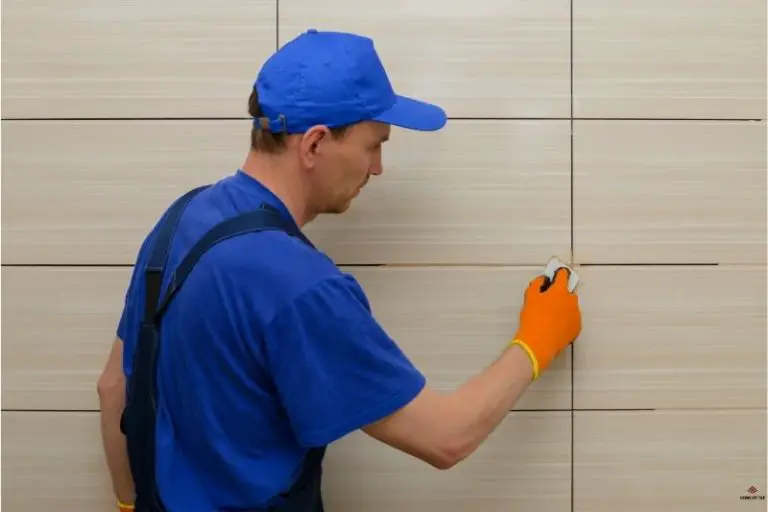Tiling and Corners: 5 Things you should know
Tile is an excellent addition to a floor. It has a protective function against moisture that makes them a perfect choice for all wet rooms. It makes the home attractive, and tiled floors are comfortable walking on and protecting the wall and corners from damage. Here are the five things you should know about tiling and corners.

Contents
- 1 Tiling walls that are not plumb, some helpful tips:
- 1.1 ● Step 1. Inspect the walls:
- 1.2 ● Step 2. Select the appropriate materials:
- 1.3 ● Step 3. Level the walls:
- 1.4 ● Step 4. Remove Old fittings:
- 1.5 ● Step 5. Repair Cracks and damages:
- 1.6 ● Step 6. Sand the walls:
- 1.7 ● Step 7. Remove the moisture:
- 1.8 ● Step 8. Apply the adhesive:
- 1.9 ● Step 10. Fix the tiles:
- 1.10 ● Step 11. Apply the grout:
- 2 Tiling interior obtuse angle, some helpful tips:
- 3 Tiling external corners and tile trim, some helpful tips:
- 4 Tiling outside corner showers, some helpful tips:
- 4.1 ● Step 1. Prepare the wall:
- 4.2 ● Step 2. Prepare the corners:
- 4.3 ● Step 3. Create the grooves:
- 4.4 ● Step 4. Level the wall:
- 4.5 ● Step 5. Place the tiles:
- 4.6 ● Step 6. Use the spacers:
- 4.7 ● Step 7. Line up the tiles:
- 4.8 ● Step 8. Use the thin-set:
- 4.9 ● Step 9. Apply the adhesive:
- 4.10 ● Step 10. Apply the grout:
- 4.11 ● Step 11. Clean the tiles:
Tiling walls that are not plumb, some helpful tips:
In general, tiling walls that are not plumb start with inspecting and leveling them. Remove old fittings and repair cracks and other damaged areas. Sand the walls and remove any moisture. After the preparation, apply a suitable adhesive and lay the tiles.
In general, tiling walls that are not plumb consists of the following steps:
● Step 1. Inspect the walls:
You have to start by inspecting the walls to determine if they are appropriate for tiling. If they are not ready for tiling, you will have to decide what needs to be done to prepare them.
● Step 2. Select the appropriate materials:
You have to be very conscious regarding the selection of materials. Once done with the inspection of the walls, select an appropriate mortar bed, lumber, and sandpaper. You will also need cement for tiling, the right adhesive, a suitable grout, and some instruments for tiling.
● Step 3. Level the walls:
Tile installation on an unbalanced wall can lead to several complications. Before you begin fixing the walls that are not plumb, you have to ensure that the walls are not level. The simplest way to spot irregularities is by taking a long flat piece of lumber and sliding it across the surface of the walls. The unbalanced area will show as a gap between the level and the wall. Another option for leveling the walls is to use a putty knife and scrapers to scrape down the walls, eliminating the bumps. You can also use sandpaper to make the wall flat by rubbing it on the wall.
● Step 4. Remove Old fittings:
You have to remove old fittings from wall hangings such as nails, pins, and screws because they can unbalance the walls.
● Step 5. Repair Cracks and damages:
After removing old fittings, repair any cracks or other damage because tiles require a smooth surface for good results.
● Step 6. Sand the walls:
When done repairing the wall, you have to sand the areas that were repaired. After applying materials, the surface of the wall will become unbalanced, so sanding is necessary.
● Step 7. Remove the moisture:
Use a piece of damp cloth to wipe the walls to remove the moisture and then let it dry.
● Step 8. Apply the adhesive:
You have to apply the premixed mastic adhesive to the walls. You can get a notched trowel for applying the adhesive to the walls. Apply the adhesives by holding the trowel at 45 degrees. This, furrows of adhesive will be uniform in height.
● Step 10. Fix the tiles:
After applying the adhesive, place the tiles on the walls and fix them.
● Step 11. Apply the grout:
Apply a suitable amount of grout and let it dry.
Tiling interior obtuse angle, some helpful tips:
In general, for tiling interior obtuse angles, it is essential to correctly dry-test the layout. Accurately measure the dimensions, calculate the length, including grout lines. So you know where to start that there are no small pieces at either end. Ensure that the wall is level. If not, level it.
In general, tiling interior obtuse angles consists of the following steps:
● Step 1. Level the walls:
First, you have to level the walls. If the walls are unbalanced, the tile groves will not match. So, it is necessary to level the wall first.
● Step 2. Measure the dimensions of walls:
When tiling at an obtuse angle, you have to measure the dimensions of both tiles that have an obtuse angle. You also have to measure the dimensions of the wall accurately and calculate where to start. So there will be no small pieces at either end or in other locations. Dry-test the layout to ensure that all will look well.
● Step 3. Mark the tiles for cutting:
Mark the tiles for cutting according to the measured dimensions. Markings should be neat and visible so that the cutting process can be easily performed. This can be done by using colorful tape with a color that is different than the tile color.
● Step 4. Cut the tiles:
When cutting the tile, put it on a flat surface to not be cracked or damaged. It would be best to use an angle grinder or a wet saw to cut the tiles. First, check the cutting disk and ensure the safety measures are intact. Then, perform the process of cutting.
● Step 5. Place the tiles:
After cutting the tiles, place the tiles on the wall and ensure that all corners are matching. Then, check that the surface is neat and clean. Apply a suitable adhesive and place the tiles carefully.
● Step 6. Apply the grout:
Finally, you have to clean the gaps between the tiles, apply a suitable grout, and let it dry.
Tiling around corners without trim, some helpful tips:
In general, for tiling around corners without trim, you must start with the correct layout. Accurately measure the dimensions, calculate the length, including grout lines. Know where to start so there are no small pieces at either end. If possible, dry-test the layout. Ensure that the wall is level. If not, level it first.
Tiling around corners without trim consists of the following steps:
Step 1. Prepare the wall:
You have to prepare the wall before tiling around the corners. Install seals and joints by using thin-set and paper tape to control the moisture.
Step 2. Level the wall:
Use sandpaper to level the wall to ensure that the tiles will not be plumb. If the walls are made of bricks, remove all irregularities with a large scraper. Use a brush to clean the surface dust and other residues.
Step 3. Select appropriate materials:
You have to select appropriate materials such as thin set mortar, premixed mastic, tiles, and spacers for tiling on the corners.
Step 4. Measure the walls and tiles:
Measure the wall accurately. Calcualte, including the grout lines to fit the tiles, so you do not end up with small parts on the eighter end of the corner. If there are more corners, it probably means not all will be optimal. You can play a little bit with the thickness of the grout lines if needed. Keep in mind that not all tiles always have identical sizes due to manufacturing differences. To be sure, dry-test.
Step 5. Place the tiles:
Clean the surface and apply the adhesive on the back of the tile and fit them into place. Use spacers between the tiles to get even joints.
Step 6. Apply the grout:
After you finish tiling, you should apply water-resistant grout and let it dry.
Tiling external corners and tile trim, some helpful tips:
In general, for tiling external corners with tile trim, measure the dimensions accurately. Calculate the layout, including the grout lines and the trim. The goal is to minimize small ends at either end of the corner. Choose the correct starting point and dry-test the layout.
Tiling external corners and tile trim consists of the following steps:
● Step 1. Prepare the wall:
First, prepare the wall. It should be clean and adequately plumb. If the wall is not level, tiles will not lie flat on the surface, and the end result will not look great.
● Step 2. Adjust the length of the corner trim:
Measure the wall dimensions accurately and calculate the layout, including the grout lines and the trim. Try to minimize small ends at either end of the corner. If you have multiple corners, you have to find the best-balanced layout or focus on the most visible corner. Choose the correct starting point and dry-test the layout. Once done with the preparation, you have to adjust the length of the corner trim with the cutter.
● Step 3. Level the surface:
Use a large spirit level to see if the corner is plumb from top to bottom, and then level the surface.
● Step 4. Apply the Adhesive:
Once you are done with leveling, spread the adhesive on the wall corner and mount the corner trim.
● Step 5. Tile the wall:
After applying the adhesive, tile the wall in a professional manner until you reach the trim. Keep in mind that not all tiles have precisely the same dimensions. Due to manufacturer tolerances, one tile can be slightly wider than the other one. You can counter this by slightly making the grout line wider or smaller. This goal is to end well in the corner, so the trim looks beautiful.
● Step 6. Apply the Grout:
Use a grout when the adhesive is dry, and then let it dry.
Tiling outside corner showers, some helpful tips:
In general, for tiling an outside corner in a shower, it is essential to correctly dry-test the layout. Accurately measure the dimensions, calculate the length, including grout lines. So you know where to start that there are no small pieces at either end. In a shower, you need to ensure that the wall is protected against moisture. Decide if you want to use a trim or not.
Tiling outside corners in a shower consists of several steps:
● Step 1. Prepare the wall:
Before starting up the tiling, make sure that the walls are ready for the tiles. Line up your corners by using a leveler. If the corners are not plump, then balance the corners and make a flat surface.
● Step 2. Prepare the corners:
Apply adhesive on the corners and make a smooth surface with the help of a scraper.
● Step 3. Create the grooves:
Now with the notched side of the trowel, apply light pressure at 45 degrees to create long grooves. These grooves will help remove any excess thin-set. They also help to suction the tile against the wall, which keeps it in place.
● Step 4. Level the wall:
First, level the wall and then apply tiles on the shower wall by applying adhesive to the wall and backside of the tiles.
● Step 5. Place the tiles:
Apply the tiles in the corners in a straight line. Use adhesive on the back of the tiles and create a thin layer so that the tile can easily fix to the walls and corners.
● Step 6. Use the spacers:
It would be best if you used the spacers in your test lay, so you know exactly where your tiles will end.
● Step 7. Line up the tiles:
Use a screwdriver to line up the tiles. Once the tiles dry, it will be hard to move them in any direction.
● Step 8. Use the thin-set:
If the thin-set is dry and thick, throw it away and use a new batch. You can extend the life of the thin-set by adding water to it.
● Step 9. Apply the adhesive:
Apply adhesive, or you can use silicone in the joints and corners.
● Step 10. Apply the grout:
Use grout to fill the tile joints and let the grout dry.
● Step 11. Clean the tiles:
When finished, use a cloth or sponge to clean the tiles and corners so that no adhesive remains on the front side of the tiles.








